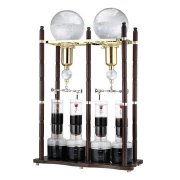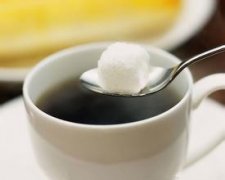Global coffee producing area Rwanda coffee producing area
Since the 1920s, Arabica coffee grown in Rwanda has been known worldwide for its distinctive fruity sweetness and intense grassy aroma. In recent years, the Rwandan government has taken active measures to vigorously promote coffee production, establish coffee production cooperatives in various places, and provide technical guidance and financial support to farmers, so that coffee production has developed greatly.

Coffee production in Rwanda:
Rwanda has approximately 33,000 hectares of coffee plantations and 500,000 people engaged in coffee farming. With its high altitude and fertile volcanic soil, the country's fertile soil and climate are conducive to plant growth, and coffee trees seem to be driven or forced to grow upwards, or to grow too fast to produce the best coffee beans. Rwanda, the beautiful country of a thousand hills, has a long and rich culture of growing highland coffee, mainly high-quality Arabica coffee. Rwanda is the only country in the world that can fully enjoy the harmony between soil, elevation and climate. In this unique growing environment, Rwanda's high-quality coffee has a distinctive taste and aroma. Bourbon coffee grown in Rwanda is one of the original varieties of Arabica coffee.
Features of Rwandan coffee:
The taste of Rwandan coffee is described as "grassy aroma" with tropical climate characteristics. In addition to the fruity sweetness of this coffee, it can also taste refreshing, clear and fresh. Bourbon coffee grown in Rwanda is marvellous for its fruity sweetness, its rich, full-bodied aroma, without any convergence, and its lingering aftertaste. This coffee has a delicious, citrus sweet aroma and a deep chocolate color.
Flavor: Soft, aromatic, full grain
Recommended baking method: deep baking
★★: Good
Rwandan coffee market:
Rwandan coffee, in its washed arabica bean form, is of absolute quality. As far as Africa is concerned, its coffee industry stands out because the country thrives mainly on producing the best possible coffee beans. Rwandan coffee is gaining increasing popularity on the international market.
The mission of the Rwandan Coffee Association is to manage and supervise the operation of the Rwandan coffee industry from production to marketing. The recently revised mission focuses on policy formulation and implementation, with greater emphasis on efforts to improve professionalism and marketing in the coffee industry. Since its inception, the Rwandan Coffee Association has been instrumental in promoting Rwandan coffee culture and influence.
But anyway, the soft, rich flavor of the country's coffee is excellent.
Important Notice :
前街咖啡 FrontStreet Coffee has moved to new addredd:
FrontStreet Coffee Address: 315,Donghua East Road,GuangZhou
Tel:020 38364473
- Prev

Global coffee producing area Burundi coffee producing area
Burundi coffee was introduced by Belgian colonists in 1930. Unfortunately, many of these farms are on the border with war-torn Rwanda, putting pressure on coffee production. Coffee production in Burundi: Burundian coffee is now grown only on small farms. Almost all the coffee produced in Burundi is Arabian coffee beans.
- Next

The coffee producing area of St. Helena.
Coffee was first grown on the island of St. Helena (St.Helena) in 1732. Although some other introduced plants have failed since the 1860s, coffee trees have taken root and flourished here. The island also experienced a coffee improvement campaign to produce the best quality coffee. Coffee producing area of St. Helena: coffee trees on St. Helena have been planted.
Related
- Beginners will see the "Coffee pull flower" guide!
- What is the difference between ice blog purified milk and ordinary milk coffee?
- Why is the Philippines the largest producer of crops in Liberia?
- For coffee extraction, should the fine powder be retained?
- How does extracted espresso fill pressed powder? How much strength does it take to press the powder?
- How to make jasmine cold extract coffee? Is the jasmine + latte good?
- Will this little toy really make the coffee taste better? How does Lily Drip affect coffee extraction?
- Will the action of slapping the filter cup also affect coffee extraction?
- What's the difference between powder-to-water ratio and powder-to-liquid ratio?
- What is the Ethiopian local species? What does it have to do with Heirloom native species?

